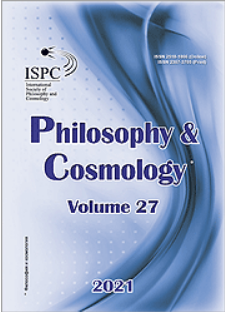The Discovery of Black Light
The Discovery of Black Light
Author(s): Dan HowittSubject(s): Philosophy of Science
Published by: Международное философско-космологическое общество
Keywords: black light; black matter; infinity; eternal; Black Hole; curved space; spatial limits of the universe;
Summary/Abstract: This article is the beginning of a reexpresson, and partial revision, of my book Black Light. The questions that I discuss in this article are listed in the below list of sections. In Sections 7, 8, 27, and 28, I discuss my discovery of black light. The theoretical discovery of black light (that is, the thought experimental discovery of black light): The black spatial field in, for example, a “dark” room is actually, I argue, black light; and it is emitted from everything in the spatial field of the room (that is, the relatively empty space, and all objects). If, hypothetically, the black light in the above room was removed, we, when we would look into the spatial field of the room, would be blind, despite that we have the capacity to see. The observational discovery of black light: There is no such thing as a “colorless” visual field for observers: A “colorless” visual field would be a visual field of blindness for observers, despite that they have vision, and that their eyes would be open. The black visual field is not, as is commonly stated, “the absence of photons,” “the absence of visible light,” and the, as such, absence of color: If it were, then it would be “colorless” (that is, not black), and, as such, a visual field of blindness for observers. The experimental confirmation of black light via neurophysics: In Section 28, I demonstrate that particular EEG experimentation that was done on test-subjects in various conditions provides evidence or proof that the black of the black visual field that strikes our retinas is black light.
Journal: Philosophy and Cosmology
- Issue Year: 27/2021
- Issue No: 27
- Page Range: 34-57
- Page Count: 24
- Language: English

